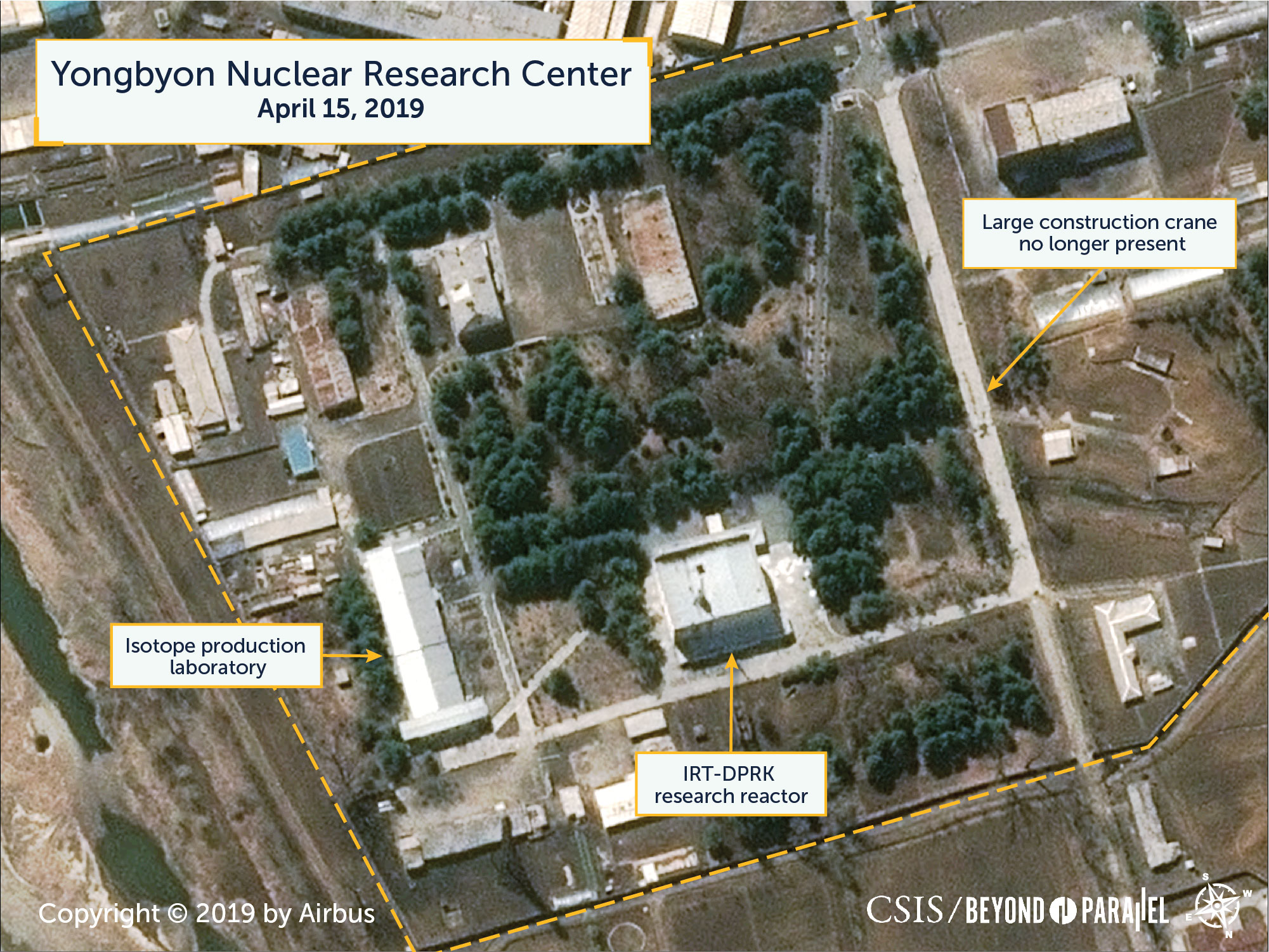
Yongbyon Update: Movement of Specialized Railcars May Indicate Transfer of Radioactive Material
Key Findings
- Airbus satellite imagery of North Korea’s Yongbyon Nuclear Research Facility acquired on April 15 shows some minor changes in the presence of the specialized railcars serving the Uranium Enrichment Plant and Isotope/Tritium Production Facility compared with April 12 imagery.
- Lacking additional information, this movement provides no further understanding concerning the presence of these specialized railcars other than their probable use for the movement of radioactive material.
- Elsewhere, the large construction crane that was observed at the DPRK-IRT reactor is no longer present.
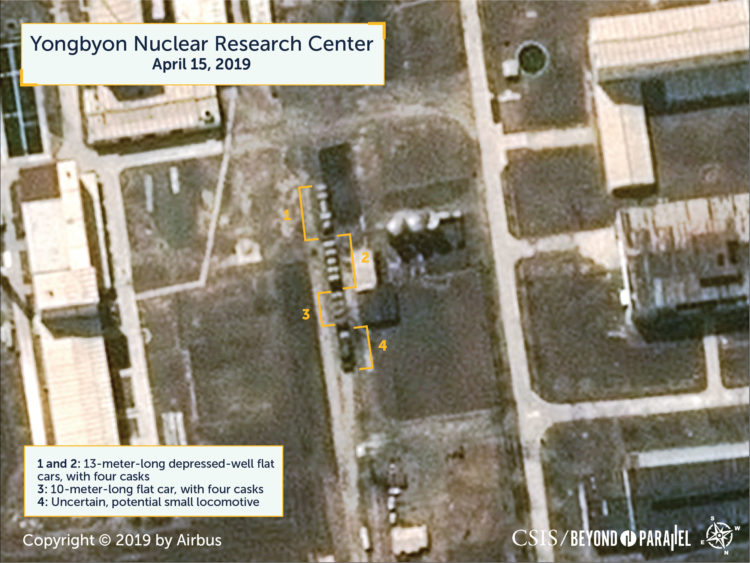
An Airbus satellite image of North Korea’s Yongbyon Nuclear Research Facility acquired on April 15 (two days after the April 12 image) shows some minor changes in the presence of the specialized railcars near the Uranium Enrichment Facility and Radiochemistry Laboratory.
The two approximately 12-meter-long blue bulkhead flatcars are no longer present at the southern railyard serving the Uranium Enrichment Plant and Isotope/Tritium Production Facility. These railcars are also not present at the Radiochemistry Laboratory or at the Pungang-ni rail station.
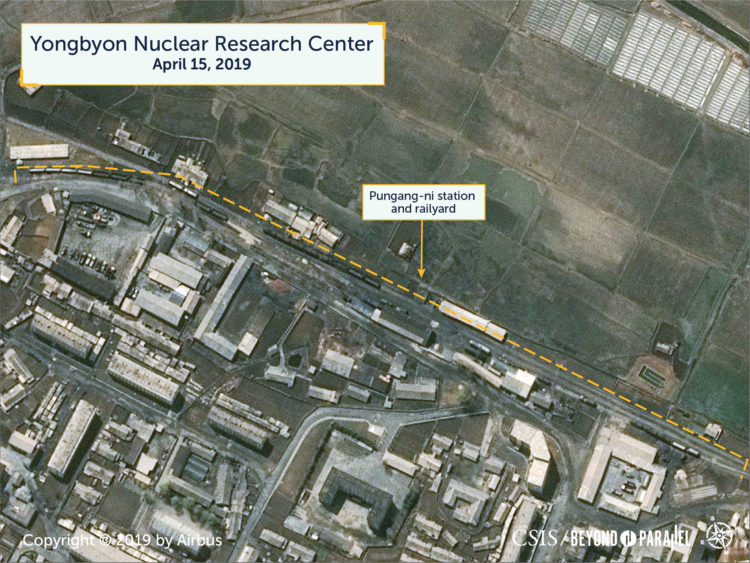
The lone approximately 10-meter-long flatcar with four casks that was positioned on the track to the west of the Radiochemistry Laboratory has been moved to the southern yard to join the two depressed-center railcars.
A fourth, approximately 10-meter-long railcar has now joined the three cars that had been present at the site in April 12 imagery. While the resolution is not optimal, this fourth railcar appears to be a flatcar carrying what may be a shipping container, large crated piece of equipment, or similar sized load.
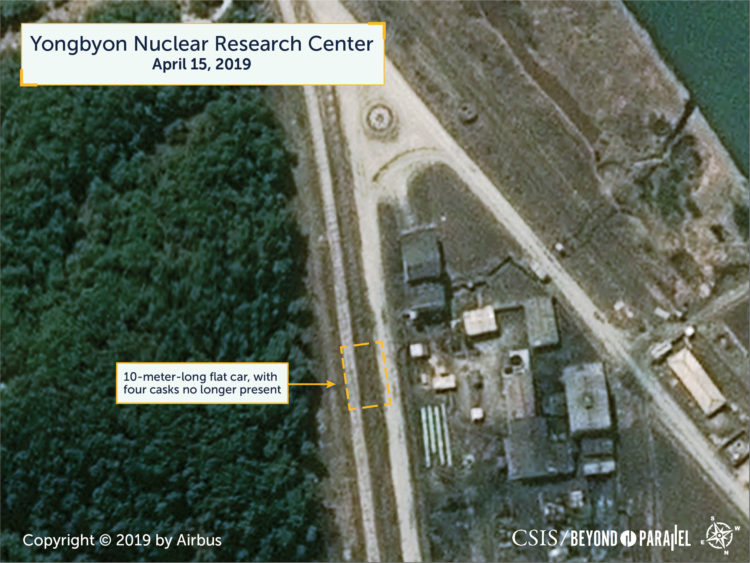
Lacking additional information, this movement provides no further understanding concerning the presence of these specialized railcars other than their probable use for the movement of radioactive material.
Elsewhere, the large construction crane that was observed at the DPRK-IRT reactor is no longer present, while the construction crane at the Spent Fuel Rod Storage Building is still present.
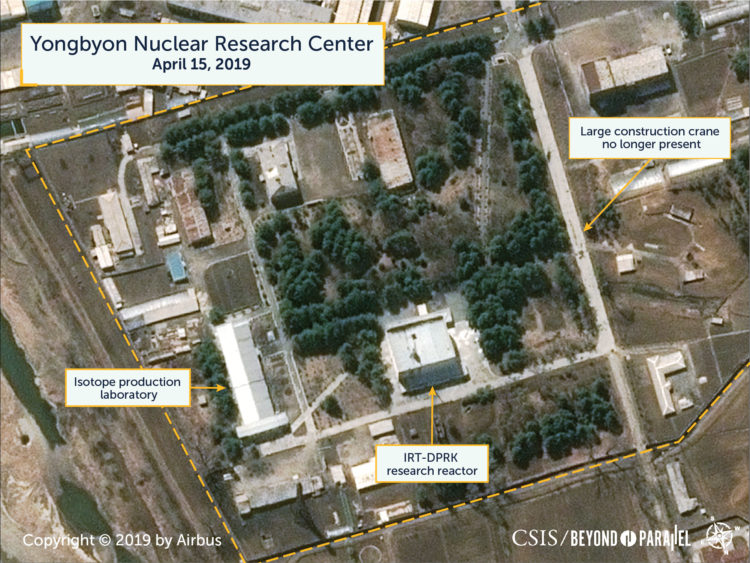
Additionally, the high level of water in the Kuryong-gang continues to overflow the earthen dam at several points.
